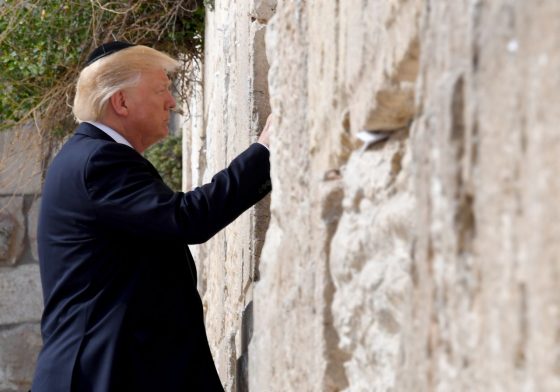BESA Center Perspectives Paper No. 850, May 30, 2018
EXECUTIVE SUMMARY: Many claim that President Trump’s decision to recognize Jerusalem as Israel’s capital and move the US embassy there has increased violence and instability in the area. Four months after the decision, one can easily disprove this assertion.
In a video news item on Ynet, a former Israeli intelligence officer – in an article disseminated by a reputable Israeli think tank – claimed that Trump’s decision to recognize Jerusalem as Israel’s capital has increased violence and instability in the area. In making this claim, the officer was repeating a charge made by Israel’s detractors on Iranian and Arab media sites.
An uptick in violence was indeed anticipated by EU officials and diplomats of member states who opposed the decision, as well as UN officials.
Four months after the decision was taken, this assertion can easily be exposed as a myth.
The Meir Amit Intelligence and Terrorism Information Center, probably the most reputable source of data on the Israeli-Palestinian conflict, has spent many years tabulating significant Palestinian terrorist attacks in the Israeli-Palestinian conflict.
The Center defines a “significant” attack as one “involving shooting, a vehicular attack, the use of IEDs, or a combination of the above.” This means that “stones and Molotov cocktails thrown by Palestinians are not included.”
The chart the Center produced for violent attacks over the past year is worth a thousand words (see below).
By no stretch of the imagination can the data be interpreted to support the assertion that President Trump’s decision to move the US embassy has increased terrorist attacks.
The pattern of attacks in the four months since President Trump’s announcement, which was made at the beginning of December 2017, is remarkably similar to that of the four months preceding the decision. There were 13 attacks in the period before the decision (from August to early December) compared to 14 attacks from December 2017 through early April.
Significant terrorist attacks over the past year

The number of terrorist attacks in both four-month periods paled in comparison to the period from April through July 2017, during which there were 38 attacks – considerably more than the two periods since then put together (27).
Those summer months included the most serious attack of the entire period: the killing of two Israeli policemen near Damascus Gate in Jerusalem by three Palestinian gunmen from Umm al-Fahm who began their attack from the Temple Mount and were subsequently killed.
That incident led to an Israeli decision to set up metal detectors on the Temple Mount. That decision elicited large Palestinian demonstrations in July and August that went on until the decision was rescinded.
But data on serious terrorist attacks are perhaps not the best measure with which to assess instability.
The number of arrests Israel makes is usually a good indicator of levels of other forms of violence and protest. The problem is that Palestinian organizations such as Prisoners Behind Bars and Hamas publish data about arrested Palestinians only on an annual basis.
However, Addameer, a Palestinian NGO concerned with the welfare of Palestinian prisoners in Israeli detention centers, keeps a monthly record of the total number of those prisoners.
The numbers through March 2018 show no significant increase. They were 6,098 in September 2017, 6,198 in October, and 6,154 in November (the three months preceding Trump’s decision), and 6,141 in January 2018, 6,119 in February, and 6,050 in March (the three months after Trump’s decision). The figures actually show a slight decline in arrests, not an increase.
Perhaps the best indication that Trump’s decision did not bring Palestinians into the streets to confront Israeli security was Hamas’s “March of Return” campaign, which began on “Land Day” and continued through May 14, the date of the establishment of the State of Israel, which Palestinians call “the Nakba” (the catastrophe).
One might ask, first of all, why there was a need to construct a campaign to mobilize Palestinians to violence if President Trump’s decision had in fact been so inflammatory. But more to the point: the Palestinians of the West Bank, Israeli Arabs, and – most significantly – 98% of Gazans ignored Hamas’s urgings to participate and stayed home.
This is an edited version of an article that first appeared in The Jerusalem Post on April 21, 2018.
Prof. Hillel Frisch is a professor of political studies and Middle East studies at Bar-Ilan University and a senior research associate at the Begin-Sadat Center for Strategic Studies.
BESA Center Perspectives Papers are published through the generosity of the Greg Rosshandler Family


